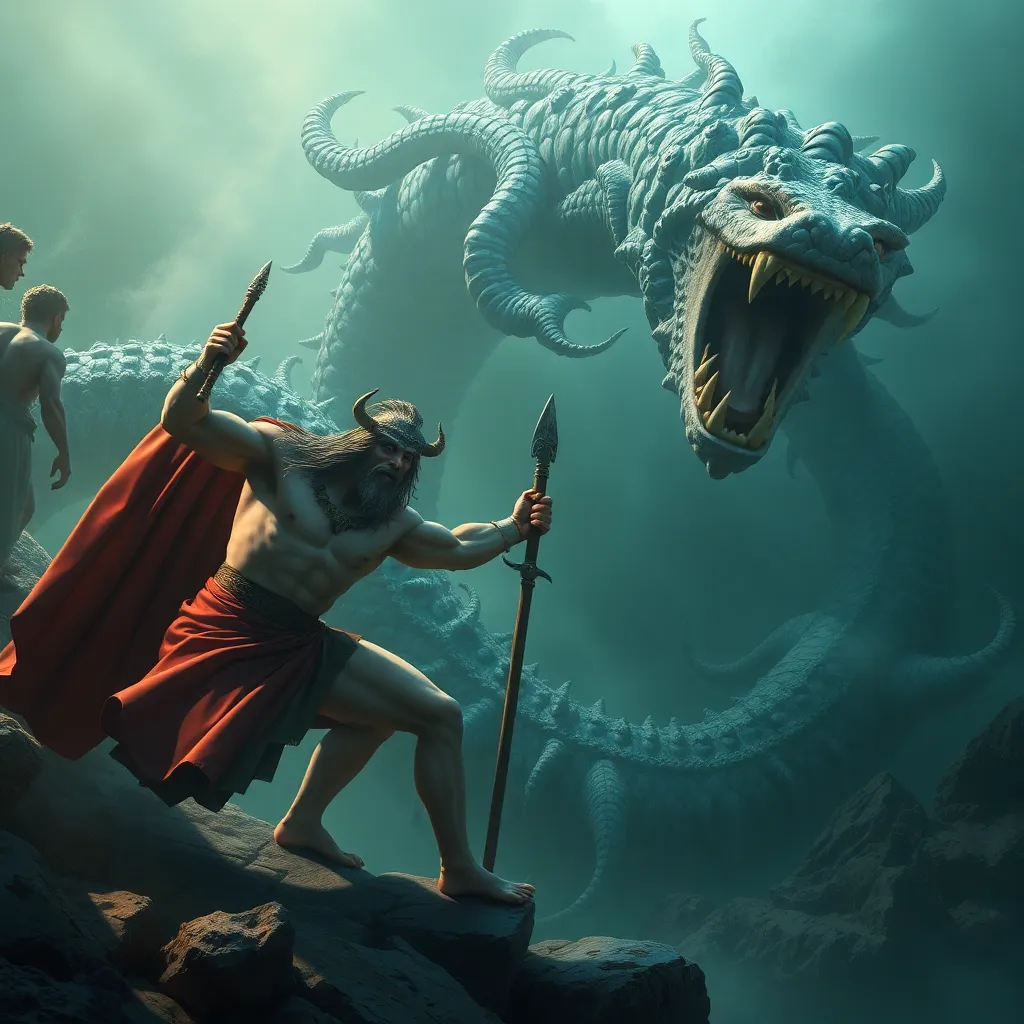Heracles vs. the Hydra: A Triumph of Strength and Strategy in Greek Mythology
I. Introduction
Heracles, known for his unmatched strength and heroic feats, stands as one of the central figures in Greek mythology. His adventures, particularly his Twelve Labors, showcase not only his physical prowess but also his resilience and intellect. Among these labors, the encounter with the Hydra, a legendary multi-headed serpent, is particularly notable. The Hydra embodies chaos and regeneration, making it a formidable opponent. This article explores the themes of strength and strategy that emerge from the legendary battle between Heracles and the Hydra.
II. The Mythological Background of Heracles
Heracles, also known by his Roman name Hercules, is the son of Zeus and Alcmene, a mortal. His divine parentage bestows upon him extraordinary strength, but it also sets the stage for a tumultuous life filled with challenges and quests. To atone for a crime induced by madness sent by Hera, Heracles undertakes the Twelve Labors, a series of seemingly impossible tasks that test his abilities and character.
The Twelve Labors include:
- Slaying the Nemean Lion
- Slaying the nine-headed Hydra
- Capturing the Golden Hind of Artemis
- Capturing the Erymanthian Boar
- Cleaning the Augean Stables
- Slaying the Stymphalian Birds
- Capturing the Cretan Bull
- Stealing the Mares of Diomedes
- Obtaining the Girdle of Hippolyta
- Obtaining the Cattle of Geryon
- Stealing the Apples of the Hesperides
- Capturing Cerberus
These labors solidify Heracles’ role as a hero in Greek mythology, illustrating his journey from a flawed being to a revered figure celebrated for his bravery and strength.
III. The Hydra: Characteristics and Symbolism
The Hydra is often depicted as a serpent-like creature with multiple heads, which can regenerate when severed. This regenerative ability makes it a symbol of chaos and the seemingly insurmountable challenges that one may face. Each time Heracles cuts off one of its heads, two more grow back in its place, representing the cyclical nature of challenges and adversities.
In mythology, the Hydra is also connected to the underworld, serving as a guardian of the depths and a representation of the darker aspects of existence. Its association with water and swamps further emphasizes its connection to chaos and the unknown.
IV. The Encounter: Setting the Stage for Battle
Heracles’ battle with the Hydra is set against the backdrop of his second labor. Tasked with slaying the beast, he ventures into the swamp of Lerna, where the Hydra dwells. The location is significant, as it symbolizes the murky waters of challenges that can engulf even the strongest heroes.
Upon arriving, Heracles faces several initial challenges:
- Navigating the treacherous terrain of the swamp
- Confronting the Hydra’s fierce guardians, including the giant crab sent by Hera
- Underestimating the creature’s regenerative powers and the difficulty of the task at hand
V. Strength vs. Strategy: The Duel Unfolds
The duel between Heracles and the Hydra showcases the clash between brute strength and clever strategy. Heracles, armed with his club, initially relies on his physical ability to combat the creature. However, the Hydra’s regenerative abilities quickly turn this into a losing battle, as heads regrow faster than he can sever them.
The turning point in this encounter comes with the intervention of Iolaus, Heracles’ nephew. Recognizing the futility of brute force alone, Iolaus suggests a strategic approach. He uses fire to cauterize the necks of the Hydra after Heracles decapitates a head, preventing them from regenerating. This teamwork exemplifies the importance of collaboration in overcoming formidable challenges.
VI. The Aftermath of the Battle
With Iolaus’ help, Heracles ultimately triumphs over the Hydra, marking a significant victory in his journey. The consequences of this labor extend beyond mere victory; it symbolizes Heracles’ growth as a hero. The labor serves as a testament to the necessity of both strength and strategy in facing life’s challenges.
The Hydra’s legacy in mythology is profound. It not only remains a cautionary tale of chaos but also serves as a reminder of the resilience needed to face adversities. The themes presented in this labor echo throughout Greek mythology, influencing future heroes and their encounters with monsters.
VII. Themes and Lessons from the Encounter
The encounter between Heracles and the Hydra highlights several enduring themes:
- Balance between brute strength and clever strategy: While physical might is essential, it is often the application of strategy that leads to victory.
- Importance of teamwork and collaboration: Heracles’ success is attributed not just to his strength but also to the support and ingenuity of his companion, Iolaus.
- Contemporary resonance: The story reflects modern values of resilience, intelligence, and the necessity of seeking help when faced with overwhelming challenges.
VIII. Conclusion
Heracles’ triumph over the Hydra is a classic tale that encapsulates the essence of heroism in Greek mythology. It serves as a reminder that challenges may appear insurmountable, but with the right combination of strength, strategy, and support, victory is attainable. The enduring legacy of this myth continues to inspire and resonate within our culture and literature, solidifying Heracles as a timeless hero whose adventures teach valuable lessons about courage, teamwork, and resilience.


